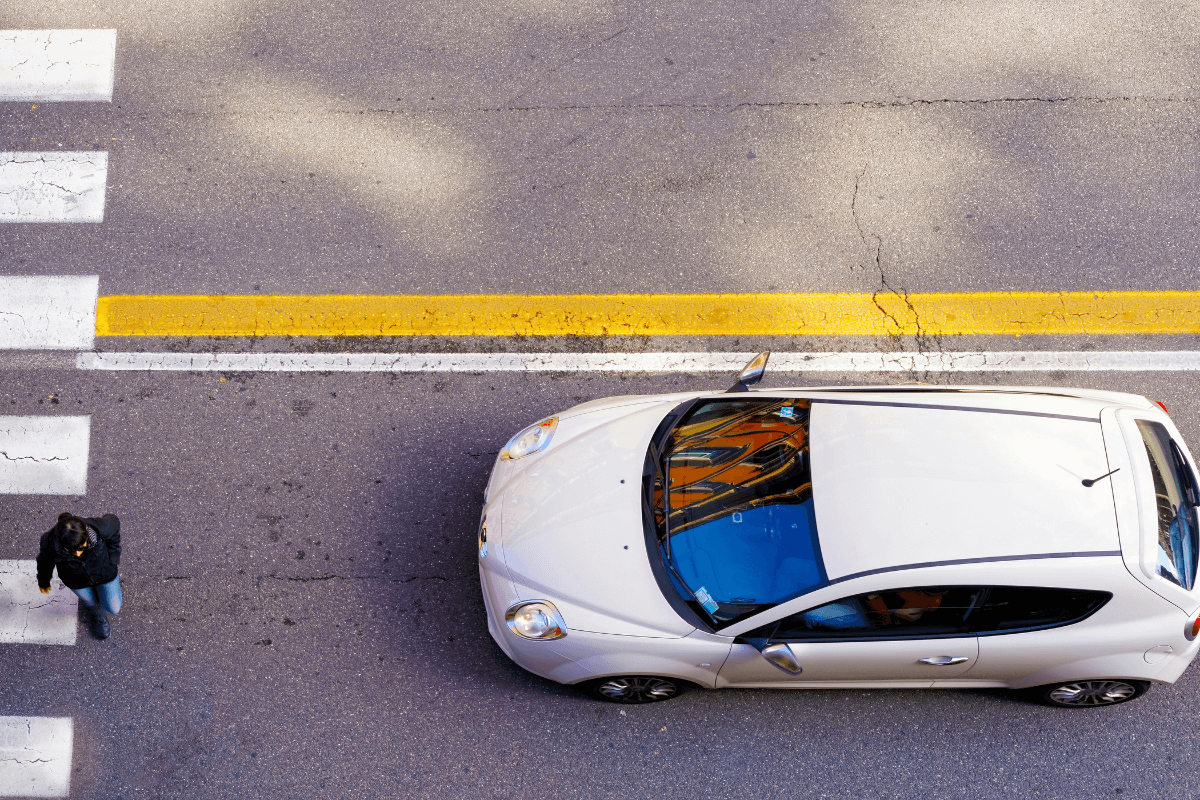
Whether you were injured in a crosswalk accident or an electric scooter accident, or you lost a loved one in a pedestrian accident death, Ashley Applewhite – an experienced pedestrian accident attorney – can help.
Texas Pedestrian Safety Laws
Pedestrians have legal rights on Texas roadways, just like those in vehicles. Motor vehicle drivers have a legal obligation to exercise due care around pedestrians as well. According to Texas Transportation Code Chapter 552:
- Vehicles and pedestrians at intersections with a traffic signal must obey the signal
- Vehicles must yield to pedestrians in crosswalks when traffic signals are not present
- Drivers may not pass other vehicles that are already stopped at a crosswalk to allow a pedestrian to pass
- Vehicles emerging from an alley, building, or private roadway or driveway must stop and yield to pedestrians
- Drivers must exercise due care to avoid hitting a pedestrian, including honking their horn
- Drivers must exercise special care when they observe a child, incapacitated person, or obviously confused individual on the roadway
What Makes a Pedestrian Accident Case Unique?
Many factors make an auto pedestrian accident case unique and different from other types of motor vehicle accidents, including:
- The injuries: Pedestrian accidents often result in serious injuries, such as fractures, head and brain injuries, and spinal cord injuries, which can have long-term effects, some of which can be permanent. The injuries can be expensive to treat and may require ongoing medical care, which can make a pedestrian accident case more complex.
- The location: Pedestrian accidents can occur on a sidewalk, in a crosswalk, or while walking along the side of the road. The specific location of the accident can impact the liability determination in the case and the defenses available to the at fault driver.
- The parties: Pedestrians don’t have protection against impacts, making them more vulnerable to injury in an accident. In addition, a pedestrian accident may involve multiple parties which can complicate the case, as the fault and responsibility of each party will need to be determined and proven.
Fault in a Pedestrian Accident Claim
Drivers must follow safety rules of the road to prevent pedestrian accidents, including looking out for pedestrians, using extra caution when it’s hard to see like at night or in bad weather, slowing down when entering a crosswalk, yielding to pedestrians, following the speed limit, and being cautious when reversing, among others. Distracted drivers, drunk drivers, impaired drivers, impatient drivers, careless drivers, and others engaging in reckless driving behaviors are responsible for the damages they cause. If you are hurt by negligent parties, you should speak with a personal injury lawyer about filing a pedestrian accident lawsuit so you can hold the responsible party accountable.
In a pedestrian accident, the driver of the vehicle is typically at fault because drivers have a duty to exercise reasonable care when operating their vehicles and to watch for pedestrians, particularly in areas where they are more likely to be present, such as in neighborhoods, near schools, and in downtown areas. Fault in a pedestrian accident is not always that clear, however, and multiple factors can cause or contribute to a collision.
Common Causes of Pedestrian Accidents
The most common causes of pedestrian accidents include failure to obey traffic laws, traffic lights, and road signs, the absences of crosswalks and sidewalks and other infrastructure issues, speeding, driving under the influence of drugs or alcohol. In addition, pedestrian fatalities most commonly involve men and occur in urban areas and at night. Children and the elderly are also more likely to be injured and killed in a pedestrian accident.
Compensation for Damages in a Pedestrian Accident Claim
Texas is the twelfth most dangerous state in the country for pedestrians. Common injuries include TBI, neck injuries, spinal cord injuries, chest and abdominal injuries, and musculoskeletal injuries such as broken bones. After an auto pedestrian accident, victims can seek financial compensation from the responsible parties. The monetary damages available in a personal injury lawsuit can include:
- Medical expenses, including past medical care, future care, and long-term care, if needed
- Lost wages
- Pain and suffering
- Loss of consortium
- Punitive damages
A person on foot is no match for the impact of a moving vehicle, which can cause catastrophic injuries due to their size and speed. It is important to speak with an experienced personal injury attorney to understand the specific damages that may be available in your case, the unique factors that can affect a pedestrian accident recovery, and the best course of action for seeking maximum compensation.
Contact Pedestrian Accident Attorney Ashley Applewhite for a Free Consultation
Were you involved in a pedestrian accident in Austin? Is an insurance company making your recovery even more challenging? Are you confused about how to navigate the legal process? If the answer to one or more of these questions is yes, you should consult with a motor vehicle accident lawyer to learn more about your legal rights.
